:sharpen(level=0):output(format=jpeg)/wp-content/uploads/2023/11/5-Questions-with-Multimedia-Artist-Dennis-Rudolph.jpg)
5 Questions with Multimedia Artist Dennis Rudolph
Nov 1, 2023
We came upon multimedia artist Dennis Rudolph’s oil painting at Berlin’s @positions.artfair and were immediately drawn in by the colour scheme, the scale and the attention it screamed for. At that point, we hadn't realized just how interactive it really was.
We couldn’t just walk by. We needed to meet the artist behind the work. We needed to learn more about him. And so, we did…
It turned out, the piece we were looking at, "The Artwork of the Future (ATLAS shrugged)", combined the traditional medium of paint with virtual and augmented reality. Dennis explained that painting in virtual reality has refreshingly changed the way he paints "in real life”, creating an innovative exchange between reality and virtual reality both for his artistic practice in the studio and for the viewer's reception of his works in public space.
Naturally, this made us even more curious.
1AN: After navigating through The Artwork of the Future ourselves, we’d love to know what drew you to the medium of virtual and augmented reality for your artwork. How did you first begin experimenting with these technologies in your creative process?
DR: In an artistic crisis in 2012, a friend told me to go to Los Angeles. I applied for a grant with the idea to update Rodin’s Gates To Hell in California to mark the end of western civilization. I never got the grant but went anyway and it changed my art forever. Upon arriving in Los Angeles, I told somebody at a friend’s party that I had come there to build a portal between heaven and hell and he said: “You have to build that portal in California City.” I skipped getting any sleep that night and went there straight away. It is a failed urban development project from the late fifties in the middle of nowhere in the Mojave Desert, one and a half hours north of LA. Lots of empty streets nicely carved out into the sand. The perfect place! But I ran into some problems. Contrary to Rodin’s Gates To Hell, my work — Das Portal — should be open. That meant it had to belong to two realities since it was standing on the threshold between them (heaven and hell, so to say). I struggled from 2012 - 2017 to find a medium which is both present and absent simultaneously, thus fulfilling the concept of something which belongs to two realities at the same time. In 2017, the first consumer friendly VR headsets came to shops like Target and I immediately thought: Great! I’ll paint Das Portal in VR using a 3D painting program that tracks my hand in the virtual space and then place it with a GPS based Augmented Reality App on the Desert Butte in California City. VR became the other side of Das Portal and seen in AR on your phone, things are present and absent at the same time. Thus, the new medium of VR and AR allowed me to finish my project and fulfill the concept. It also then triggered lots of inspiration for my oil painting and helped me overcome my crisis. Technology radically changed my art in a very refreshing way. Not only did I update Rodin’s Gates To Hell but subsequently also myself and I became a painter of the 21st century.
1AN: Similarly, your work Götterfries I (ATLAS Shrugged) is a multi-sensory experience that combines oil paintings, augmented reality, and music. Can you discuss the importance of creating immersive and interactive artwork?
DR: Götterfries is a painting measuring 8x2.2m. It is a discussion with Wagner and his idea of the Gesamtkunstwerk which he describes in his essay „Das Kunstwerk der Zukunft” (which was also the title of my last two exhibitions at Upstream Gallery in Amsterdam and FWR Gallery in Berlin). You download an augmented reality app, which I developed, and scan the large-scale painting with it. The painting then comes to life and four digitally 3D painted figures of Atlas, Gaya, Hermes and Europa emerge out of the thick painted oil brushstrokes of the canvas to music composed by Dietrich Brüggemann. It is then that you realize the painting is not abstract, but rather part of something bigger. What I painted are merely details of the large figures. I find it fascinating that the whole space in front of the painting becomes a stage. This is an incredible new opportunity for doing art. In former times paintings used to be a window into a utopian other world. Now, with the development of the recent technological mediums, the Other comes out of the painting to our reality. The spectator also becomes part of the art since they must activate the painting with their phone. On the one hand this draws attention to the fact that everybody has a smart phone nowadays and that we are all already cyborgs. But it also invites the viewer to become part of the work. I love to watch people engaging with a painting in different choreographies since the figures emerging from the painting are in 3D and always too big for any room and so you must move around to get the whole picture. This engagement of the spectator was also one of Wagner’s points in his idea of the ideal, multi-faceted, inclusive, total artwork, the Gesamtkunstwerk. He argued back in the 19th c. that people who are able to partake in the total artwork don’t exist yet, this kind of art appreciation should be born out of a revolution. Now the digital revolution is happening and maybe this time it will create a new man who will completely and totally be able to become part of an artwork.
1AN: Such an interesting concept! Can you elaborate on the notion of painting in VR, and how you translate these digital brushstrokes into physical, tangible works of art?
DR: Painting in VR is a revolution by itself because it allows for painting in 3D. This has never been possible in the thousand-year history of painting. It allows me to use my artistic hand in the digital realm. I draw a line in the air and can walk around it. It appears right in front of me - like magic. In my left hand is a virtual palette; I can choose colors and different brushes from it. Usually, I select the wet oil paint brush. But I soon realized my artistic self-continued to need real, tangible things in the studio, otherwise I would go crazy. So, I thought about how I could materialize my digital creations, transform them into the real world. I wrote a program where I can fly around the world I created in VR, which is filled with giant figures I call Artificial Gods. I then take photos of details of the figures which I think could become a good abstract painting. These photos serve as the inspiration for my oil paintings. I work with a lot of paint in a very thick impasto technique in order to give back the digital brushstroke its body. Digital brush strokes are very thin, they just appear thick because of the applied shaders. The IRL oil painting then seems to be abstract since it is only a very small detail. But seen with my app the complete figure appears in the exact position where I painted a detail of it and you realize it is not abstract but part of a digital whole. The transformation from the digital medium into the very old medium of oil painting gives the work a tension I like. You sense something is off, but you can’t really tell where the painting is coming from. Same as when I 3D print VR paintings and have them cast in bronze. A medium that is even older. The 3D forms I paint in VR could have never been thought of if you use clay or you carve them out of stone. The casts then also have a surprising similarity with Futurism. Which I find very fitting regarding the euphoria towards technology from Marinetti and the likes. The way I do art is only possible because of recent technological developments. This makes me think about my artistic autonomy. Who is in charge: technology or me? Materializing the digital is the exact opposite of the general trend in society to digitalize everything real. It is my way of trying to take control over the digital assets. I don’t know if I’ll be successful, but it certainly is a great topic for doing art in the 21st century.
1AN: With your work being displayed in galleries across Europe and the US, how have you seen the art world evolve and shift in response to new technologies and digital mediums, and how do you envision virtual reality and augmented reality continuing to shape the future of art?
DR: I think everything that has been written in science fiction books is becoming true. It is fascinating for me to incorporate the new technologies into my art and that the science fiction component becomes a part of it. There is an old German science fiction sequel called Perry Rhodan. In the first book, mankind comes across a spaceship of an old civilization stranded on the moon. The inhabitants are all very decadent and play a sort of telepathic game all day long where they invent abstract geometrical figures in their thoughts which are projected onto a screen in front of them. All they talk about is what kind of figurative inventions they were able to construct. I think this would be a great future also for our civilization. If we spent all our days in the metaverse, the world might become a much more peaceful place.
1AN: Many already live in a Metaverse to varying degrees, and it’s increasing presence in our lives leaves no question that it has a direct impact on society. But what about artists? In your opinion, what role does the artist have in society?
DR: For me doing art is to gain power over the things that surround me. If I draw something that’s standing in front of me and I manage to give it a striking form, it becomes a part of me. Like magic. The artist is the only person in society who is able to get done with the things in the world. I believe for the coming ages, technology will be one of these things we have to deal with. And it will become one of the main topics for the arts. So, if there will be a showdown between the machines and us, the artists are our last hope. Which probably means we are doomed.

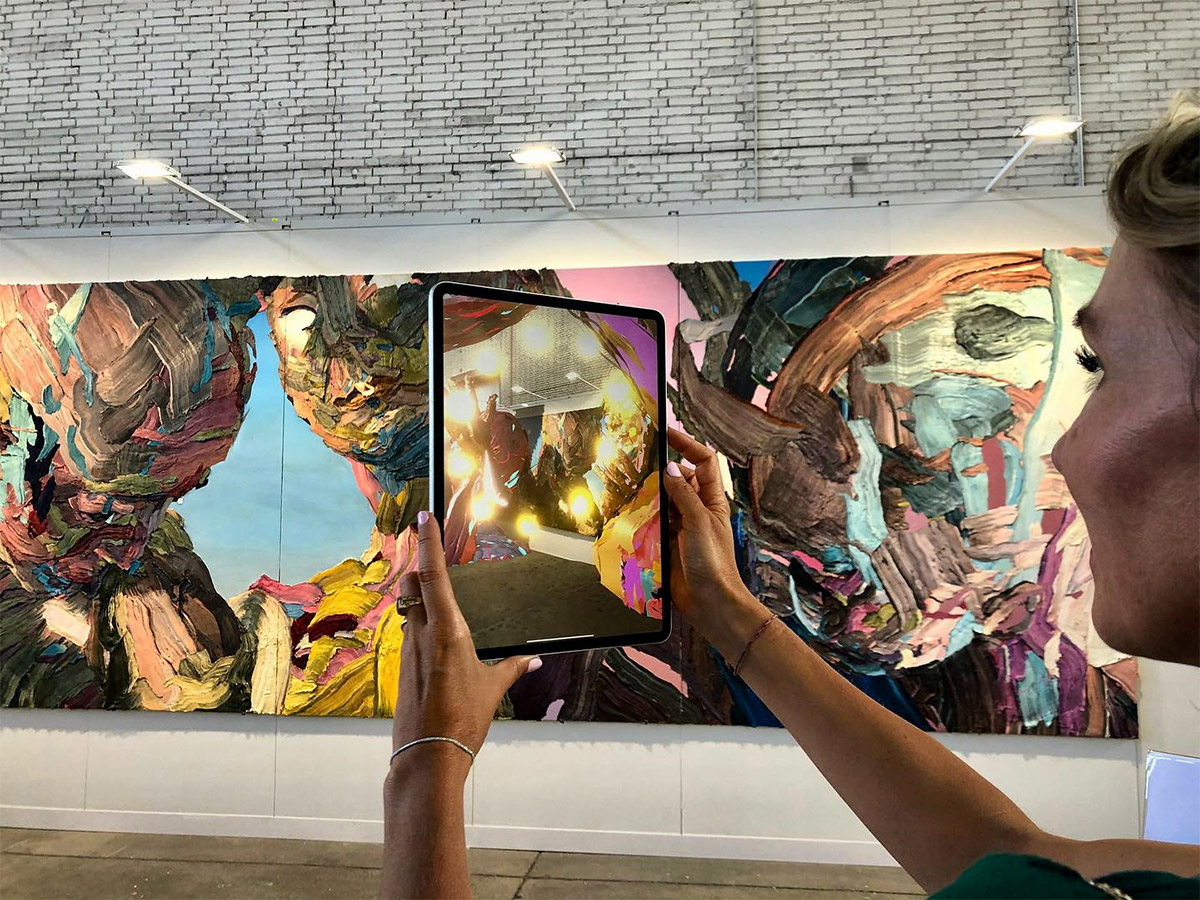
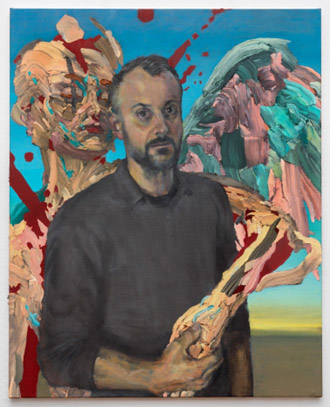
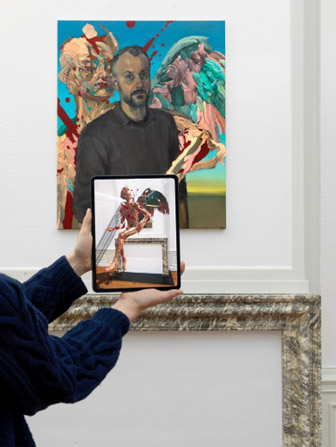
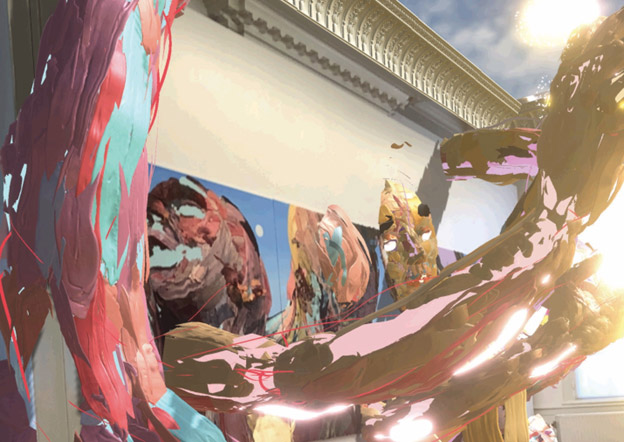
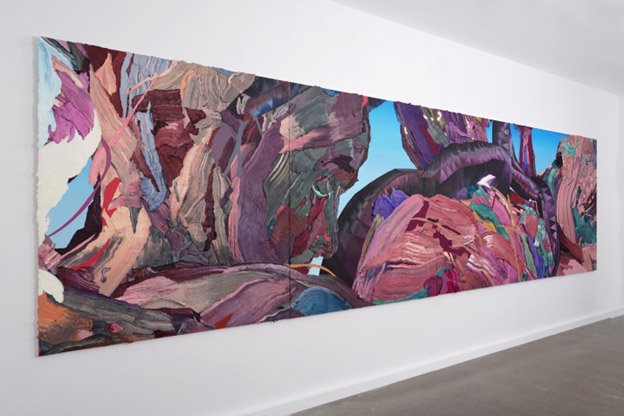
:sharpen(level=1):output(format=jpeg)/wp-content/uploads/2024/05/The-Art-Lawyers-Diary-1.jpg)
:sharpen(level=1):output(format=jpeg)/wp-content/uploads/2024/04/5-Questions-with-Bianca-Cutait-part-2-1.jpg)
:sharpen(level=1):output(format=jpeg)/wp-content/uploads/2024/05/20231208_164023-scaled-e1714747141683.jpg)
:sharpen(level=1):output(format=jpeg)/wp-content/uploads/2024/04/header.jpg)
:sharpen(level=1):output(format=jpeg)/wp-content/uploads/2024/04/5-Questions-with-Bianca-Cutait-part-1-1.jpg)
:sharpen(level=1):output(format=jpeg)/wp-content/uploads/2024/03/5-Questions-with-Alaina-Simone-1.jpg)